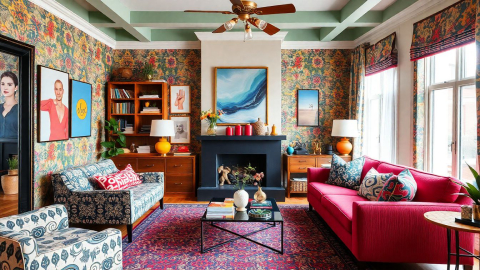American Colonial Architecture: A Satirical Stroll Through History's Architectural Attic
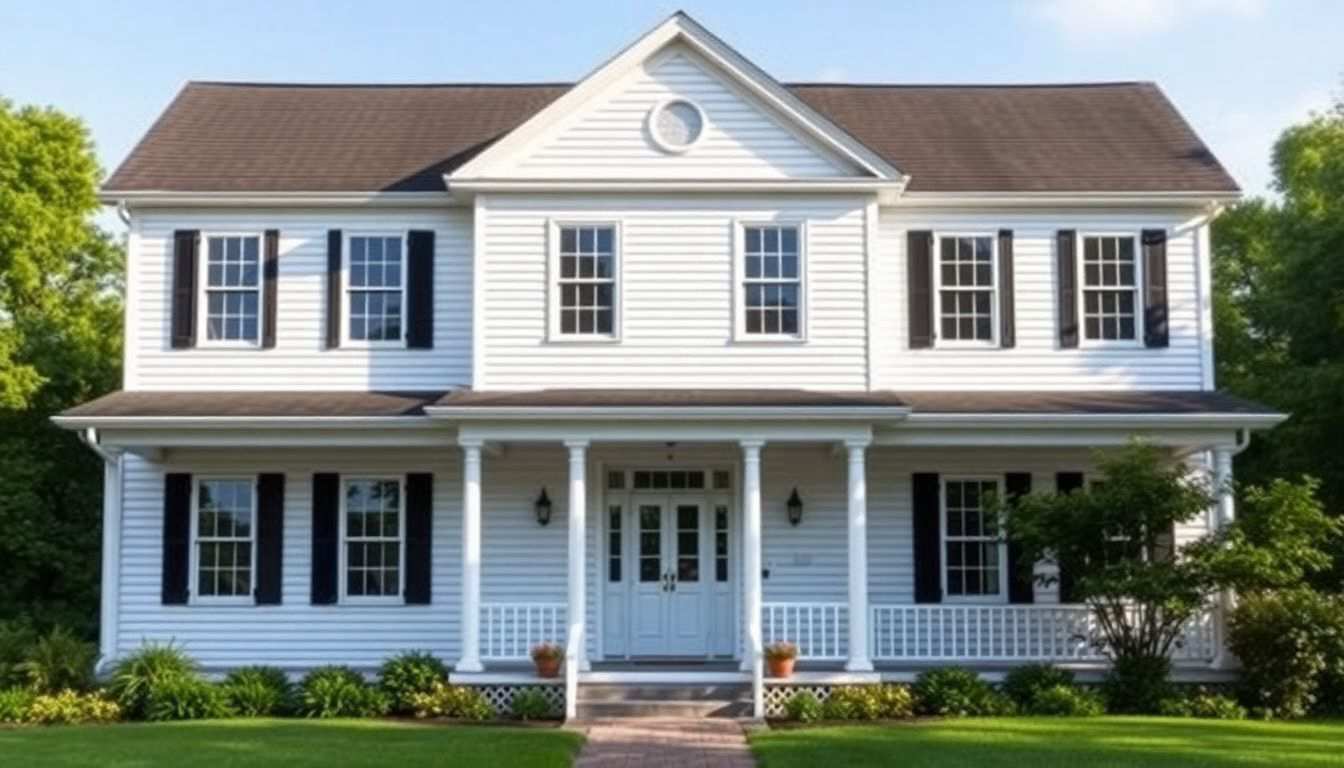
Ah, American Colonial architecture! The style that screams 'I have a deep-seated nostalgia for a time I never actually experienced!' It's the architectural equivalent of your grandmother's china cabinet - stately, traditional, and gathering dust faster than you can say 'George Washington slept here.' But fear not, dear reader, for we're about to embark on a whimsical journey through the cobblestone streets and symmetrical facades of America's architectural past.
The Birth of a Nation('s Questionable Taste in Houses)
Picture this: It's the late 16th century, and a bunch of Europeans decide they've had enough of their cramped, plague-ridden cities. So, naturally, they hop on wooden ships and sail across the Atlantic to build... exact replicas of the homes they left behind. Because nothing says 'new world' like old world design, right?
As these intrepid colonists spread across the land like an architectural rash, they brought with them a veritable smorgasbord of styles. From the English First Period to the Dutch Colonial, it was like a Eurovision Song Contest of architecture, with each group trying to outdo the others in terms of quaintness and impracticality.
The English: Masters of the Obvious
The English, being English, decided that the best way to cope with the harsh New World climate was to build houses exactly like the ones they had back home. Because clearly, what works in rainy London will be perfect for the scorching summers and freezing winters of New England. These 'First Period' homes were characterized by steep roofs, small windows, and massive central chimneys - perfect for huddling around while questioning your life choices.
The Dutch: Bringing the 'Fun' to Functional
Not to be outdone, the Dutch settlers in New York and New Jersey said, 'Hold my beer' and introduced the Dutch Colonial style. The pièce de résistance? The gambrel roof, which looks like someone took a regular roof and gave it a swift kick in the middle. It's practical, they said. It provides more living space, they said. It definitely doesn't look like a barn, they insisted.
The Colonial Revival: Because Why Have New When You Can Have Old?
Fast forward to the late 19th century, and Americans suddenly realized they had a severe case of architectural amnesia. 'Quick!' they cried, 'We need to remember our roots!' And thus, the Colonial Revival was born, like a phoenix rising from the ashes of actual colonial buildings that had long since crumbled or been turned into Ye Olde Gift Shoppes.
This movement was less about historical accuracy and more about cherry-picking the most photogenic elements of colonial architecture. It was the Instagram filter of its day, making everything look better than it actually was. Suddenly, every suburban home wanted a Palladian window, even if the closest they'd ever been to Andrea Palladio was the local Italian restaurant.
The Dutch Colonial Revival: The Comeback Kid
The Dutch Colonial style made a triumphant return during this period, proving that you can't keep a good roof down. Architects and homeowners alike fell in love with the gambrel roof all over again, probably because it reminded them of the barns they wished they grew up in.
As Roger Stump notes in his riveting page-turner 'The Dutch Colonial House And the Colonial Revival' (because who doesn't love a good architectural thriller?), the Dutch Colonial Revival was at its peak between 1905 and 1940. It was the architectural equivalent of bell-bottom jeans - everyone had them, and looking back, we're not entirely sure why.
The Colonial Revival: A Nostalgic Journey to Nowhere
The Colonial Revival wasn't just about architecture; it was a full-blown cultural phenomenon. It was as if the entire nation collectively decided to roleplay as their great-great-grandparents. People weren't just living in colonial-style houses; they were furnishing them with colonial-style furniture, eating off colonial-style plates, and probably naming their children Prudence and Ezekiel for good measure.
This nostalgia fest reached its zenith in the 1930s when, as David Gebhard points out, 'Colonial' became the preferred style for both mansions and spec-built houses. Because nothing says 'We're in the midst of the Great Depression' like pretending it's still 1776.
The Legacy: Colonial Style in the Modern Era
Today, the Colonial Revival style continues to influence American architecture, proving that some things, like bad fashion choices and questionable architectural decisions, never truly die. From coast to coast, you can find homes with symmetrical facades, multi-pane windows, and columns that serve no structural purpose whatsoever.
But perhaps the most enduring legacy of the Colonial Revival is its ability to make Americans feel connected to a past that never really existed. It's the architectural equivalent of those 'live, laugh, love' signs - a comforting fiction that looks great on Instagram.
Conclusion: A Foundation Built on Nostalgia
In the end, American Colonial architecture and its revival tell us more about the American psyche than about actual colonial life. It's a testament to our ability to romanticize the past, even when that past involved things like chamber pots and witch trials.
So the next time you pass a Colonial Revival home, take a moment to appreciate it for what it truly is: a beautiful, symmetrical monument to our collective ability to remember history exactly as it wasn't.
FAQ: Unraveling the Mysteries of Colonial Architecture
Q: Why were colonial houses designed with such small windows?
A: Ah, the age-old question of colonial peepholes! Contrary to popular belief, our ancestors weren't trying to cultivate a vampire-friendly aesthetic. The real reason behind those tiny windows was a perfect storm of pragmatism and poverty. Glass was expensive and hard to come by in the colonies, so large windows were about as common as smartphones in the 18th century. Plus, smaller windows helped keep the heat in during those brutal New England winters. It's like they say: good things come in small packages, especially when those packages are windows and you're trying not to freeze to death.
Q: What's the deal with the gambrel roof in Dutch Colonial houses?
A: The gambrel roof, or as I like to call it, 'the roof that couldn't decide if it wanted to be pointy or flat,' is the defining feature of Dutch Colonial architecture. Its popularity stems from its clever design that provides extra living space in the attic without the need for a full second story. It's like the architectural equivalent of having your cake and eating it too - more room without the hassle of building higher. Plus, it gave colonial homeowners the perfect place to hide their tea stashes during those pesky taxation disputes. Who knew tax evasion could be so architecturally innovative?
Q: How accurate are modern Colonial Revival homes compared to original colonial architecture?
A: About as accurate as a Hollywood historical drama - which is to say, not very. Modern Colonial Revival homes are to original colonial architecture what a Renaissance fair is to actual Renaissance life: a romanticized, sanitized version that conveniently forgets about things like lack of indoor plumbing. While they borrow elements like symmetrical facades and multi-pane windows, they often exaggerate these features and combine them with modern amenities. It's like colonial cosplay for houses - all the aesthetic appeal without the historical discomfort. So while your Colonial Revival home might look the part, rest assured you won't have to worry about redcoats knocking on your door anytime soon.
References and Further Reading
- Wilson, R. G. (2004). The Colonial Revival House. Abrams.
- Murphy, K. (2005). Colonial Revival Maine. Princeton Architectural Press.
- Gebhard, D. (1930). The American Colonial Revival in the 1930s. Journal of the Society of Architectural Historians.
- Stump, R. (2016). The Dutch Colonial House And the Colonial Revival. Journal of Cultural Geography.
- Poore, P. (2018). Colonial Revival Revealed. Old House Journal.
Remember, folks, reading about architecture is almost as fun as living in a drafty old house with no air conditioning. Almost.
More Articles
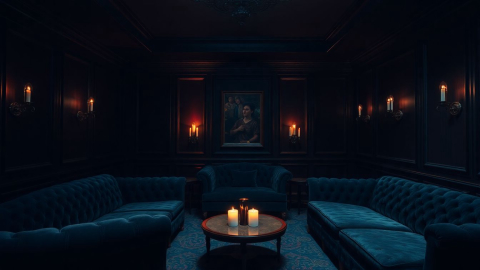
The Dark Side of Design: A Satirical Journey into the Abyss of Interior Decor
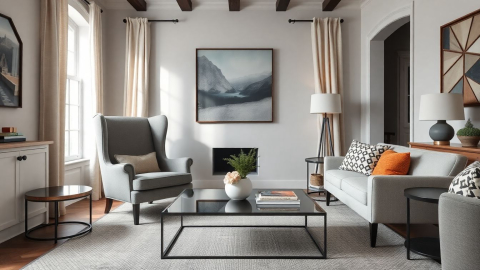
Transitional Interior Design: Mastering the Art of Blending Traditional and Modern Aesthetics
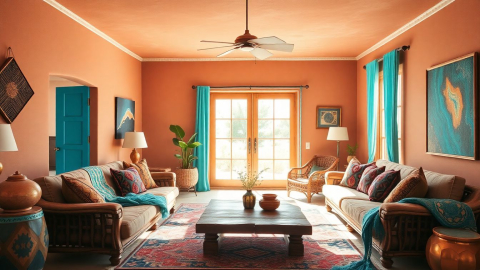
Southwestern Interior Design: A Timeless Blend of Desert Chic and Cultural Heritage
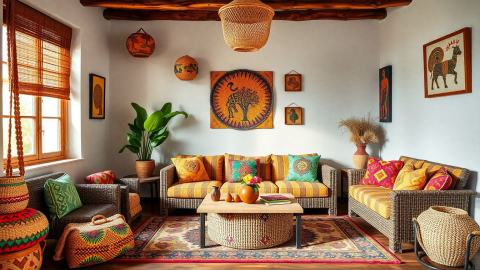
The Soul of Africa: Embracing Vibrant Design in Modern Interiors
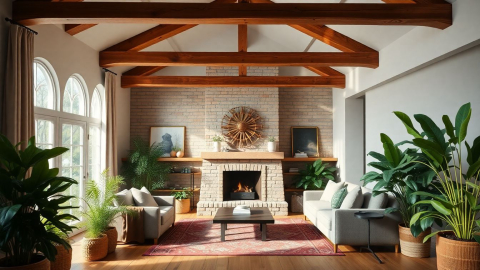
The Timeless Charm of English Countryside Interior Design
